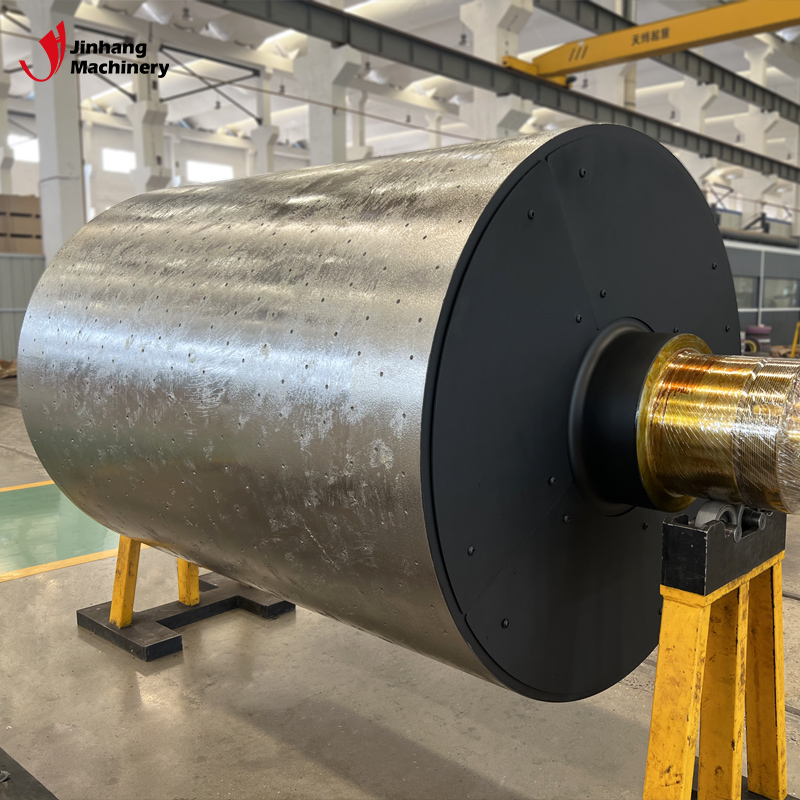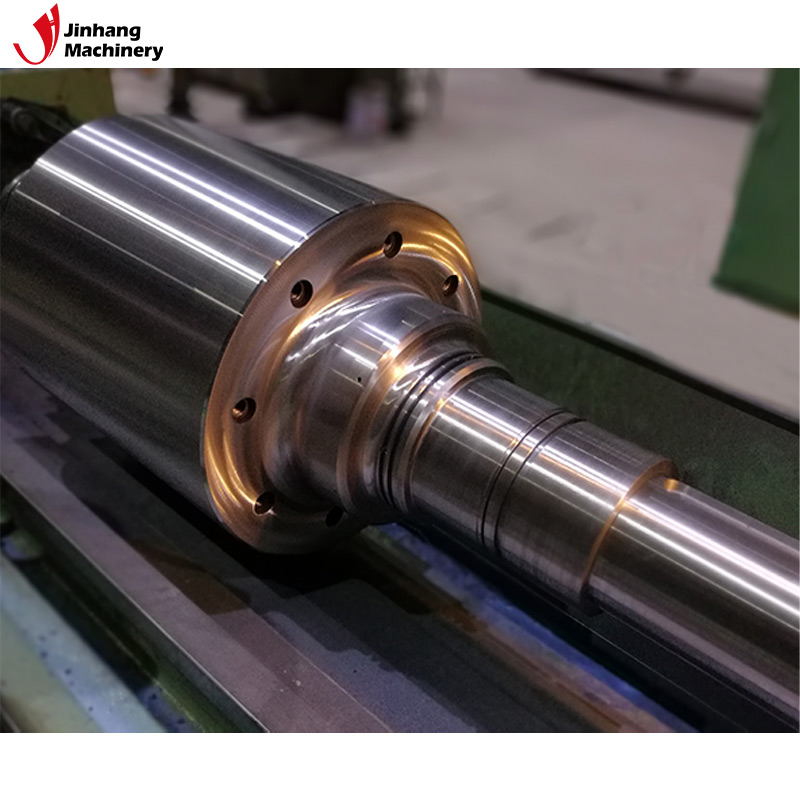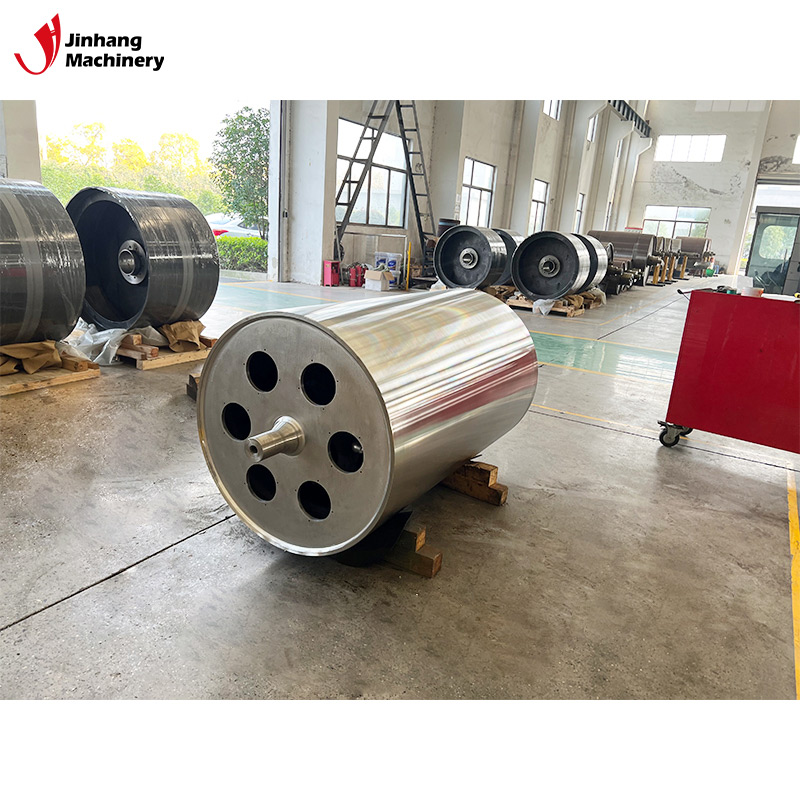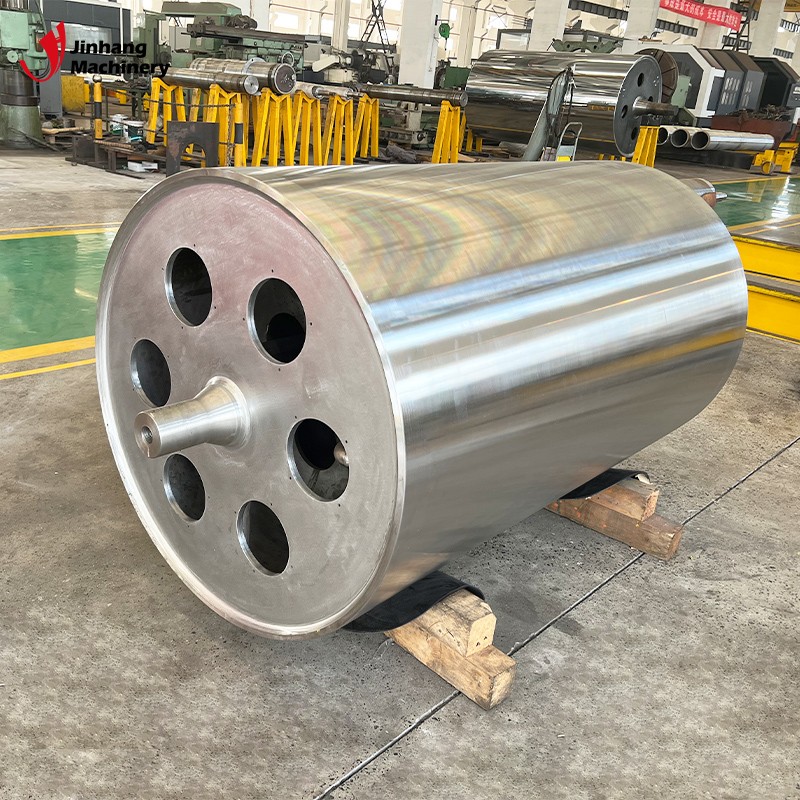How does an industrial cooling roller work?
Industrial cooling rollers play a key role in various manufacturing and processing processes, especially in production links that require rapid cooling or heat management, such as plastic film, rubber, textiles, paper and metal materials. These industrial cooling rollers help control and maintain the temperature of the product through the circulation of cooling media, ensuring the dimensional stability, physical properties and appearance quality of the final product.
In this article, we will explore in detail the working principle, structural design, application process and main factors affecting cooling efficiency of industrial cooling rollers to help understand its importance in industrial production.

How does an industrial cooling roller work?
The working principle of industrial cooling rollers is mainly to transfer heat from the processed material to the surface of the industrial cooling roller, and further to the internal cooling medium, such as water or coolant. The whole process follows the principles of heat transfer by conduction and convection to maintain the appropriate temperature of the processed material.
Heat conduction:
When the heated material (such as a plastic film that has just been extruded or calendered) contacts the surface of the industrial cooling roller, the heat in the material is first transferred to the outer surface of the roller by heat conduction. Since the roller itself is at a low temperature, heat is quickly transferred from the material, causing the surface temperature of the material to drop.
Heat convection:
There is usually a circulating cooling system inside the roller, and the cooling medium (such as water) flows in the internal pipes. The cooling medium removes the heat absorbed by the roller surface through convection, ensuring that the roller continues to maintain a low temperature, thereby achieving continuous cooling.
Circulation cooling:
After the cooling medium flows through the internal pipes of the cooling roller, it returns to the cooling system with the absorbed heat, where it is cooled by a heat exchanger or cooling device, and the cooled medium re-enters the roller for circulation. Through such a closed-loop circulation system, the roller can maintain a stable temperature throughout the production process.
In short, the basic working principle of the industrial cooling roller is to conduct heat through the contact between the surface of the roller and the material, and use the cooling medium inside the roller to remove the heat to maintain the effect of continuous cooling.

What is the structural design of the industrial cooling roller?
The design of the industrial cooling roller is complex and sophisticated, and its core function depends on an effective heat exchange system. To ensure the best cooling effect, industrial cooling rollers usually include the following key structures:
Roller material
The outer cylinder of industrial cooling rollers is usually made of high thermal conductivity materials, such as steel or aluminum alloy. These materials have good thermal conductivity and can quickly absorb and conduct heat to ensure cooling efficiency.
Steel industrial cooling rollers are widely used in heavy industry due to their strength and durability, while aluminum alloy rollers are often used in situations where high heat transfer efficiency is required due to their excellent thermal conductivity.
Cooling channel design
The internal structure of cooling rollers contains intricate cooling channels or spiral water channels, which are specially designed to allow the cooling medium to flow through the inside of the roller. Well-designed channels can ensure that the cooling medium is evenly distributed inside the roller to avoid uneven cooling. The spiral channel is generally considered to be one of the most effective designs because it ensures that the cooling medium flows through the entire roller surface, maximizing heat exchange efficiency.
Surface treatment
The surface treatment process of industrial cooling rollers directly affects its heat dissipation capacity and wear resistance. Common treatments include chrome plating, nickel plating, and ceramic coatings. These coatings not only improve the durability of the roller, but also improve its thermal conductivity.
For example, the chrome-plated surface is not only strong and durable, but also has good thermal conductivity, making it suitable for demanding cooling applications. Although the ceramic coating has a slightly lower thermal conductivity, it performs well in corrosion and wear resistance, making it suitable for some special industrial environments.
Selection of cooling medium
The medium used inside the industrial cooling roller is usually water, but in some cases where higher cooling effects are required, cooling oil or other coolants may be used. The choice of cooling medium depends on the application and temperature control requirements.
Water is the most common cooling medium because it has good thermal conductivity and economy. However, in some extreme environments, oil coolants may be more suitable because they are more stable at high temperatures and can avoid boiling or evaporation problems.
Sealing and leak-proof design
In order to avoid leakage of coolant, industrial cooling rollers usually have sophisticated sealing devices. These seals play a key role in ensuring the efficient operation of the roller's internal cooling system, while also preventing contamination and damage from the external environment.

What is the workflow of industrial cooling roller in actual application?
Industrial cooling roller is widely used in various production and processing, especially in the fields of plastic film production, paper manufacturing and rubber processing. In these fields, materials usually need to be cooled quickly after molding or processing to ensure the stability of their physical properties and appearance quality.
Plastic film production
During the extrusion and calendering process of plastic film, the plastic material is heated and formed by a high-temperature extruder, and then needs to be cooled quickly to ensure the shaping and physical properties of the material. At this time, the industrial cooling roller pulls the film across the surface and quickly takes away its heat, so that the film can be cooled flatly and evenly and enter the next processing step.
Paper manufacturing
In the paper manufacturing process, the role of industrial cooling roller is not only to control the temperature of the paper, but also to help the paper stay flat and prevent curling and wrinkling. After the pulp is processed by the dryer and press, the paper with a certain temperature needs to be cooled by the surface of the industrial cooling roller to ensure that the quality and physical properties of the paper are not affected.
Rubber Processing
In rubber processing, industrial cooling rollers are mainly used for rapid cooling and shaping of rubber sheets or rubber products. By using industrial cooling rollers, rubber products can be quickly cooled after heating treatment, thereby improving the hardness and durability of the product.

What are the main factors affecting the efficiency of industrial cooling rollers?
Although industrial cooling rollers are widely used in industrial applications, their cooling effect is often affected by multiple factors. Understanding and optimizing these factors can further improve cooling efficiency.
Cooling medium flow rate
The flow rate of the cooling medium directly affects the cooling efficiency. A faster flow rate can speed up the removal of heat, but too high a flow rate may also cause the medium to be unable to fully absorb heat. Therefore, it is crucial to find a suitable flow rate.
Contact area of the roller surface
The larger the contact area between the roller surface and the material, the higher the heat transfer efficiency. The diameter of the roller and the surface texture design will affect the contact area. For example, some industrial cooling rollers use a textured surface to increase the surface area and thus improve cooling efficiency.
Coolant temperature
The initial temperature of the cooling medium directly determines its heat absorption capacity. Using low-temperature coolant can remove heat faster, but it may also increase energy consumption. Therefore, maintaining the right coolant temperature balances cooling efficiency and energy consumption costs.
Thermal conductivity of materials
Different materials have different thermal conductivity, which directly affects the cooling rate. For example, plastics have low thermal conductivity and cool down slowly, while metal materials have high thermal conductivity and cool faster.
Temperature and humidity of the processing environment
The temperature and humidity of the external environment will also affect the efficiency of the industrial cooling roller. Higher ambient temperature will slow down the heat dissipation of the industrial cooling roller, while high humidity may cause condensation of water droplets on the surface of the industrial cooling roller, affecting the contact effect between the material and the roller.
Custom Rolls for Metallurgy, Automotive, and More – Affordable Solutions
JH Machinery offers customized rolls that are essential for industries such as metallurgy, automotive testing, and packaging. We specialize in manufacturing high-quality rolls in a variety of materials, including rubber, polyurethane, and tungsten carbide-coated options. With our extensive experience and cutting-edge machinery, we ensure that each roll is crafted to meet your precise needs. Get the best prices on high-performance rolls by purchasing directly from our factory. Bulk purchasing options and discounts are available, so reach out for a quote today.
